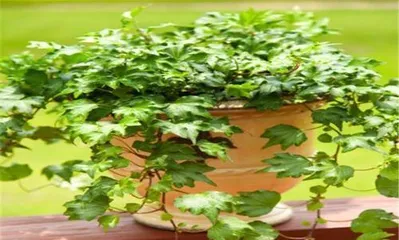Ivy Care Tips: How to Make Ivy Thrive?

Ivy is a very popular climbing plant, and its beauty and resilience make it a top choice for many as an indoor and outdoor decorative plant. However, for first-time growers, ivy is not always easy to manage. This article will introduce you to how to properly care for ivy to keep it healthy and lush.
Understanding Ivy's Growth Environment
Before starting care, it's very important to understand the plant's growth environment. Ivy is a climbing plant native to Europe and Asia, growing in moist, semi-shady, well-drained environments. To keep ivy healthy and lush, we need to provide a corresponding environment.

Choosing the Right Light and Temperature for Ivy
Ivy is suitable for growing in semi-shady environments and cannot tolerate strong sunlight. When planting ivy in a well-lit location, it is best to block some sunlight to protect the plant. At the same time, ivy has relatively high temperature requirements, with the most suitable growth temperature being 15°C to 24°C.
Keeping Ivy Soil Moist
Ivy needs to keep the soil moist to care for its roots. However, excessive watering will lead to root rot. Be sure to ensure the soil is dry before watering. In summer, ivy needs watering once a week; in winter, you can appropriately reduce the frequency of watering.
Providing Proper Nutrition
Ivy needs adequate nutrition to promote its growth. During the growing period, fertilizer should be applied every month. You can choose potassium dihydrogen phosphate fertilizer or NPK compound fertilizer. For indoor-grown ivy, organic fertilizer can be chosen.

Timely Pruning of Ivy
When ivy grows too fast, it can become uncontrollable. Timely pruning is an important means of maintaining its shape and health. In spring or summer, ivy needs to have its new stem tips pruned. In autumn or winter, old, withered stem tips can be pruned.
Providing a Good Drainage System for Ivy
Ivy needs a good drainage system to avoid the risk of root rot. To keep its roots healthy, you can place some sand or stones at the bottom of the pot to promote drainage. In addition, make sure the surface of the pot soil is dry before watering.
Pay Attention to Ivy's Pests and Diseases
Ivy is susceptible to pests such as aphids, whiteflies, and mites. During the care process, its condition should be monitored, and corresponding measures taken promptly. Ivy is also prone to diseases such as powdery mildew and brown spot disease. If a disease is found, it should be treated immediately.
Regularly Repotting Ivy
Ivy likes fresh soil. In spring or autumn each year, it can be transplanted into new soil. Before repotting, weeds, fallen leaves, and debris from the old soil should be cleaned up.
Providing Appropriate Support Structures
Ivy needs support structures to remain stable when climbing. We can use materials such as bamboo sticks, wooden sticks, or wire as support structures. These materials can be cut to appropriate lengths and shapes and placed around the ivy.
Propagation of Ivy
Ivy can be propagated by sowing or cuttings. During the propagation process, we can choose to cut stem tips or leaves of the ivy and place them in a moist medium for cuttings. In the following weeks, new roots will begin to grow.
Pay Attention to Ivy's Growth State
Ivy is a fast-growing plant, and its state may change. During the care process, its growth state needs to be closely observed. If a problem is found, timely measures should be taken.
Providing Enough Space
Ivy needs enough space to grow healthily. If placed in a small container for a long time, it will lead to tangled roots and poor growth. Choosing the right size pot and container is very important.
Keeping Ivy Clean
Ivy needs to be kept clean. If there is dust and dirt on the leaves and stems, you can use a damp cloth or sprayer to clean them. In addition, when growing indoors, air circulation needs to be maintained to avoid moisture and mold growth.
A Healthy Ivy is Easier to Propagate
Only healthy plants can propagate better. During the care process, the plant needs to be given sufficient nutrients, water, and oxygen to maintain its health.
In caring for ivy, we need to pay attention to its growth environment, light, temperature, water, fertilizer, pruning, and pests. Only in this way can we make ivy healthy and lush, bringing us beautiful visual enjoyment.